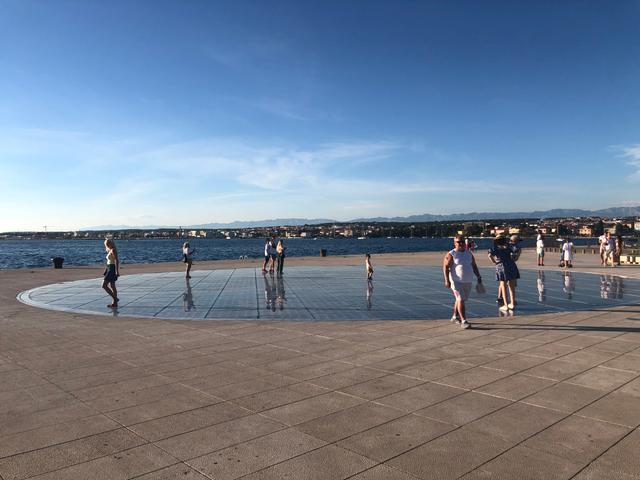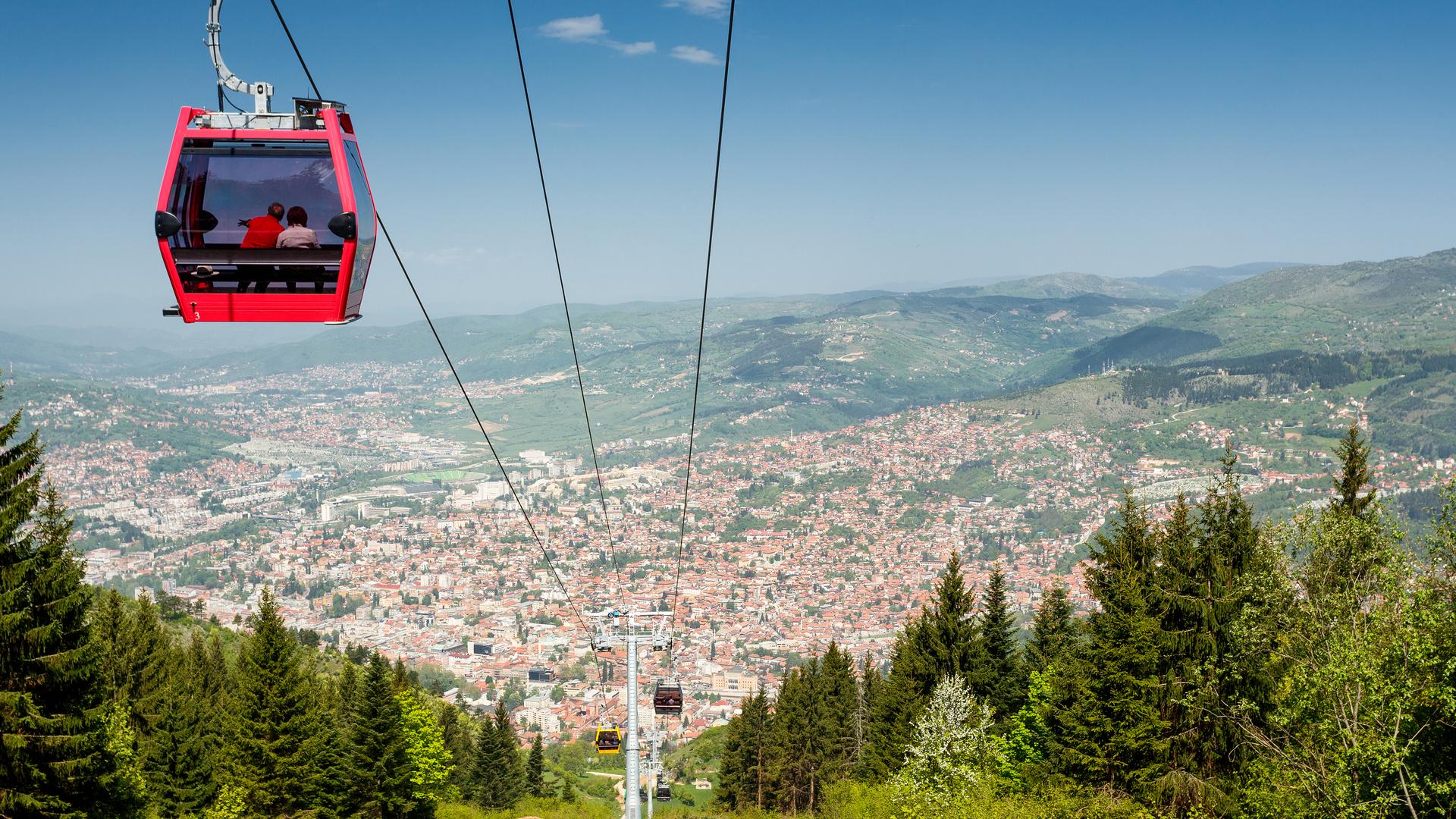Split - Sarajevo
Similar popular transfers:
Private transfer from Split to Sarajevo
The best way to go and visit Sarajevo is to book a private transfer from Split to Sarajevo. MaciTours is a Croatian transfer service which offers the best prices for a private transfer. MaciTours has at its disposal a fleet of luxurious and premium vehicles that will make your transfer as comfortable as possible.
Sarajevo is located some 200 km from Split and the duration of your transfer is about 4 h. While travelling from Split to Sarajevo, you may want to visit the old city of Mostar on the Neretva River and explore a town where East meets West and Europe mixes with the Orient. If you want to visit Mostar you can book a private Split to Sarajevo via Mostar transfer.
How to get from Split to Sarajevo? It is very hard to get from Split to Sarajevo without taking private transfer. When You pay bus tickets, It will be almost same price as private transfer from Split to Sarajevo. If You want to have reliable and comfortable transfer, only You need to do is to book private transfer from Split to Sarajevo with MaciTours. A few facts about Sarajevo Sarajevo is the capital and largest city of Bosnia and Herzegovina, located on the banks of the Miljacka River, within the greater Sarajevo valley and surrounded by the Dinaric Alps on all sides. The name Sarajevo derives from the Turkish noun saray, meaning "palace" or "mansion", thereby making the name of Sarajevo, 'city of the palace." Just as in virtually every other Bosnian town or city, here too East meets West and their traditions, beliefs, histories and architectures mix and combine in a rather unique way.
Sarajevo is the political, financial, social and cultural centre of Bosnia and Herzegovina and a prominent centre of culture in the Balkans, with region-wide influence in entertainment, media, fashion and the arts. Sarajevo is sometimes called the "Jerusalem of Europe" or "Jerusalem of the Balkans", due to its long history of religious and cultural diversity. It is one of only a few major European cities to have a mosque, Catholic church, Orthodox church and synagogue within the same neighbourhood. Even though settlement in the area stretches back to prehistoric times, the modern city arose as an Ottoman stronghold in the 15th century. In 1885, Sarajevo was the first city in Europe and the second city in the world to have a full-time electric tram network running through the city, following San Francisco.
In 1914, it was the site of the assassination of Archduke Franz Ferdinandby local Young Bosnia activist GavriloPrincip that triggered World War I. In the aftermath of World War II, the establishment of Socialist Yugoslavia led to a massive expansion of Sarajevo, then the constituent republic's capital, which culminated with the hosting of the 1984 Winter Olympics. However, after the start of the Yugoslav Wars, for 1,425 days from April 1992 to February 1996, the city suffered the longest siege of a capital city in the history of modern warfare, during the Bosnian War and the breakup of Yugoslavia. Sarajevo has been undergoing post-war reconstruction, and is the fastest growing city in Bosnia and Herzegovina.
What to see while in Sarajevo
Sarajevo is also famous for its city lookouts; including an observation deck on Avaz Twist Tower, Park Prinčeva restaurant, Vidikovac lookout on MountTrebević, Zmajevac lookout and the Yellow/White fortresses lookouts in Vratnik, as well as numerous other rooftops throughout the city.
A symbol of Sarajevo is the Trebević cable car which was reconstructed in 2018 and is one of the most popular tourist attractions in the city taking visitors from the city centre to Mount Trebević.
Other popular destinations in Sarajevo include the VreloBosne Park, the Sarajevo cathedral, and the GaziHusrev-beg Mosque, the Emperor’s Mosque and the Baščaršija, all of which are located in the Old City.
Stari Grad is characterized by its many religious structures, and examples of unique Bosnian architecture and it contains numerous hotelsand tourist attractions.
Sarajevo's old bazaar and the historical and cultural centre of the city. Baščaršija was built in the 15th century when Isa-Beg Isaković founded the city. On the Baščaršija there are several important historic buildings, such as the GaziHusrev-beg Mosqueand sahat-kula, the famous Sarajevo clock-tower. Sarači Street is one of main pedestrian streets in Sarajevo, located in Baščaršija and in that street you can find numerous shops with traditional handicraft products, amid the Old City oriental scenery. The street is ideal when looking for souvenirs. The Emperor's Mosquethe first mosque to be built in 1457, immediately after the Ottoman conquest of Bosnia. It is the largest single-subdome mosque in Bosnia and Herzegovina, built in the classical Ottoman style of the era and is dedicated it to the Sultan, Mehmed the Conqueror, the conqueror of Constantinople. The Sacred Heart Cathedralis a Catholic church in Sarajevo and is commonly referred as the Sarajevo Cathedral. The church is largest cathedral in Bosnia and Herzegovina.
The National and University Library of Bosnia and Herzegovina is a national monument, dating to the 19th century and is built predominantly in the pseudo-Moorishexpression, for which the stylistic sources were found in the Islamic artof Spain and North Africa. Serbian shelling during the Siege of Sarajevocaused the complete destruction of the library and hence about 700 manuscripts and incunabulaand a unique collection of Bosnian serial publications have been lost. Its space has been be used for various protocol events for all levels of government, as well as for concerts and art exhibitions.
Transfer includes
• Pick up in Split and drop off in Sarajevo (or vice versa)
• Comfortable air-conditioned vehicle
• Professional knowledgeable English speaking driver
• All cost related to the vehicle – gas, parking, highway tolls
• All costs related to the driver
• Available Wi-Fi in the vehicle
• 0.5l bottle of water per passenger


















